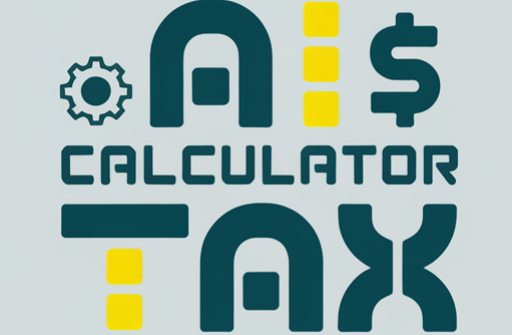Introduction
Navigating tax updates can be a challenging task for individuals and businesses alike. The complexity of ever-changing regulations often leads to inefficiencies and errors. However, AI-powered tax solutions are revolutionizing how we approach compliance. By automating processes, providing real-time updates, and enhancing accuracy, AI is modernizing tax compliance.
The Role of AI in Tax Compliance
1. Streamlining Tax Updates
AI systems offer real-time notifications of tax law changes, keeping users compliant without manual intervention. These tools analyze:
- Legislative changes.
- IRS announcements.
- State-specific tax regulations.
2. Precision with AI Calculators
AI-driven calculators simplify complex tax computations by:
- Automating deductions and credits.
- Detecting errors in filings.
- Offering personalized tax-saving suggestions.
3. Enhanced Accuracy and Fraud Detection
By analyzing patterns in income reports and expense claims, AI tools:
- Reduce human error.
- Identify potential fraud.
- Ensure consistency in tax filings.
U.S. Taxation Systems and AI
What is the Transition Tax in the U.S.?
The transition tax was introduced under the Tax Cuts and Jobs Act (TCJA) to tax untaxed foreign earnings of U.S.-based corporations. It marked the transition from a worldwide tax system to a territorial system, encouraging profit repatriation.
How Have U.S. Taxes Evolved?
U.S. tax systems have seen significant reforms, such as:
- The introduction of federal income tax in 1913.
- Social Security taxes in 1935.
- The TCJA reforms in 2017, which reduced corporate tax rates and simplified deductions.
What is USA Tax Progression?
Progressive taxation ensures higher earners pay a larger percentage of their income in taxes. It includes:
- Tiered tax brackets.
- Proportionality based on income levels.
Who Pays the U.S. Exit Tax?
The exit tax applies to expatriates and long-term residents relinquishing their status. It taxes the deemed sale of worldwide assets at expatriation.
Types of Tax Systems in the U.S.
The U.S. employs a combination of:
- Progressive Taxes: Higher rates for higher incomes.
- Regressive Taxes: Fixed rates like sales taxes.
- Proportional Taxes: Flat rates in some states.
What is the Transition Act USA?
Part of the TCJA, the Transition Act includes provisions for taxing global intangible low-taxed income (GILTI) and incentivizing domestic investments.
What is the Tax Cycle in the U.S.?
The tax cycle includes:
- Fiscal Year: January 1 to December 31.
- Filing Deadlines: April 15 for individual taxes.
- Quarterly Payments: For self-employed individuals and businesses.
U.S. Tax Transfer System
This system redistributes taxes to fund:
- Social Security and Medicare.
- Infrastructure projects.
- Education and public healthcare.
Benefits of AI in Modern Tax Management
1. Time Savings
AI automates repetitive tasks like data entry, speeding up tax processes.
2. Cost Efficiency
Affordable AI tools make expert-level tax management accessible to all.
3. Small Business Accessibility
Small enterprises gain advanced strategies previously exclusive to large corporations.
Real-World Applications of AI in Taxation
AI-Powered Platforms
- TurboTax AI Assistant: Guides users through tax filings.
- H&R Block’s Watson: Leverages AI for personalized advice.
Fraud Detection
The IRS employs AI to identify red flags, improving compliance and reducing audit risks.
Predictive Analytics
AI predicts tax liabilities, helping businesses plan effectively and avoid surprises.
Challenges and Limitations of AI in Taxation
1. Data Security
Sensitive financial data requires robust encryption to prevent breaches.
2. Bias in Algorithms
AI models must address potential biases to ensure fairness across diverse users.
3. Handling Complex Scenarios
International and intricate tax situations still require human expertise.
FAQs About AI and Tax Compliance
1. How accurate are AI tax tools?
Highly accurate for standard filings but may need manual checks for complex scenarios.
2. Can AI replace tax professionals?
AI complements professionals by automating tasks but doesn’t replace their expertise.
3. Is data safe with AI tools?
Reputable platforms use encryption and comply with privacy regulations to secure data.
4. How do AI tools manage tax updates?
AI systems automatically update to reflect new regulations, ensuring compliance.
5. Are AI tools cost-effective for small businesses?
Yes, they provide affordable automation and optimization for tax processes.
Actionable Steps for Adopting AI in Tax Compliance
- Assess Your Needs Identify if AI tools are needed for individual or business filings.
- Choose Trusted Platforms Opt for reliable AI solutions like TurboTax or H&R Block.
- Integrate Financial Data Connect AI tools with accounting software for seamless processing.
- Stay Updated Monitor updates from your AI platform to maintain compliance.
Conclusion
AI is modernizing tax compliance by making it faster, more accurate, and more accessible. While challenges like data security and handling complex scenarios persist, the benefits far outweigh the limitations. By adopting AI-powered tax tools, individuals and businesses can streamline their processes, save time, and enhance accuracy.
The future of tax compliance lies in the synergy between AI efficiency and human expertise. Embracing these innovations ensures a smarter, hassle-free approach to managing taxes.

